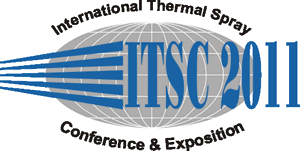
|
2798 |
|
Wednesday, September 28, 2011, Saal B2.1 2:00 PM Cold Spraying 4 |
|
Influence of the powder morphology and alumina content in cold sprayed Ni-Al2O3 coatings |
|
Francisco Sevillano / Universidad Rey Juan Carlos, Spain Pedro Poza / Universidad Rey Juan Carlos, Spain Simone Vezzú/ CIVEN, Italy Claudio Múnez/ Universidad Rey Juan Carlos, Spain Silvano Rech*/ CIVEN, Italy Andrea Trentin/ CIVEN, Italy |
|
Coldspray is becoming a consolidated technology in deposition of several metallic coatings such as aluminium, titanium, nickel, copper and alloys. However, increasing attention is paid to the capabilities of coldspray in deposition of composites Cer-Met coatings starting from powders blends. Due to the low ductility of the ceramic phase, high ceramic content coatings are difficult to get by Cold-Spray technique, but as for metal coatings the low deposition temperature reduce the residual stresses, coating porosity and oxidation. Furthermore, using powder blends obtained by quickly mixing the pure components leads to a great versatility on materials usable for deposition. In present work, the influence of both the different feedstock material and the alumina content on coldspray deposition of Ni-Al2O3 coatings were studied. Two kinds of alumina particle shape were used: by one side, spherical shape which is the more suggested for using in Cold-Spray process due to higher flowability performance; on the other side sharped shaped particles which are cost-effective, and could induce interesting peening effects leading to a major hardness or porosity reduction in the coating. Five different powder blends were prepared for each of two alumina typology, the ceramic content was set as 10, 25, 50, 75 and 90 weight percent of alumina. CP-Ni coatings has been prepared and compared with composites coatings. Characterization techniques were employed in order to determine the coating morphology and microstructure and to determine the real alumina content in the coating with respect to initial powder feedstock. The final coating porosity and the matrix hardness has been also evaluated. Finally, the performance of the coatings in terms of oxidation resistance and wear resistance were determined and discussed. |